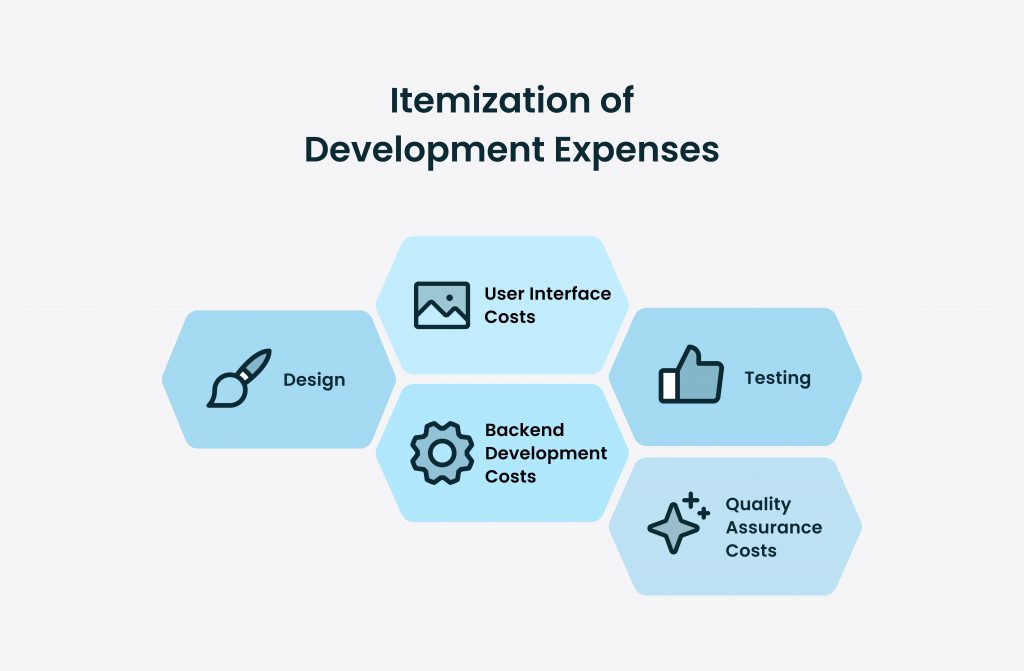We at WeSoftYou understand the importance of efficient school management systems in today’s digital era. As schools strive to streamline their operations and enhance communication with staff, students, and parents, the demand for school management apps continues to grow. In this article, we will delve into the factors that influence the cost of developing a school management app and provide insights on ways to minimize development costs.
Understanding the Basics of a School Management App
A school management app is a software solution designed to automate various administrative tasks within an educational institution. It serves as a centralized platform that enables seamless communication, efficient data management, and streamlined processes. From our experience, we have observed that such apps contribute significantly to enhancing productivity, reducing manual errors, and improving overall efficiency in schools.
With the advancement of technology, educational institutions are increasingly adopting school management apps to simplify their operations. These apps offer a wide range of functionalities that cater to the specific needs of schools, colleges, and universities.
One of the key benefits of a school management app is its ability to centralize all the necessary information in one place. This eliminates the need for manual record-keeping and reduces the chances of data loss or duplication. Teachers, administrators, and parents can access the app from any device with an internet connection, making it convenient and accessible.
Defining a School Management App
A school management app typically consists of modules that cater to specific areas such as student management, staff management, attendance tracking, timetable management, gradebook management, and more. It acts as a comprehensive ecosystem that connects all stakeholders involved in the educational process and simplifies their day-to-day responsibilities.
Let’s delve deeper into some of the key modules of a school management app:
- Student Management: This module allows administrators to manage student records, including personal details, academic performance, attendance, and disciplinary actions. It provides a holistic view of each student’s progress and enables effective communication between teachers, parents, and students.
- Staff Management: This module facilitates the management of staff records, including personal details, qualifications, attendance, and payroll. It helps streamline the recruitment process, track employee performance, and ensure timely salary payments.
- Attendance Tracking: This module automates the attendance tracking process, eliminating the need for manual attendance registers. It allows teachers to mark attendance digitally, generates reports, and notifies parents about their child’s attendance status.
- Timetable Management: This module helps create and manage class timetables, ensuring optimal utilization of resources and minimizing scheduling conflicts. It allows teachers and students to view their schedules in real-time and makes it easy to make changes when necessary.
- Gradebook Management: This module simplifies the process of recording and calculating student grades. It enables teachers to input grades, generate progress reports, and share them with parents and students. It also provides insights into student performance trends and helps identify areas for improvement.
Key Features of a School Management App
When estimating the cost of developing a school management app, it is crucial to consider the key features that will be included. Some common features include student enrollment and admissions management, attendance tracking, grading systems, timetable management, communication tools (such as messaging and notifications), library management, and finance management.
Additional features may include transportation management, examination management, alumni management, staff payroll management, and more. The complexity and number of features required will impact the overall development cost.
It is important to note that while a school management app offers numerous benefits, its successful implementation requires proper planning, training, and ongoing support. Educational institutions must carefully evaluate their specific needs and choose a reliable app that aligns with their requirements.
In conclusion, a school management app is a powerful tool that revolutionizes the way educational institutions operate. It simplifies administrative tasks, enhances communication, and improves overall efficiency. By embracing technology, schools can create a conducive learning environment for students, teachers, and parents alike.
Factors Influencing the Cost of App Development
Developing a school management app involves several factors that contribute to the overall cost. By understanding these factors, you can better plan your budget and prioritize your development requirements.
When it comes to app development, one of the most critical factors to consider is the complexity of the app. The more intricate the features and functionalities, the more time and resources will be required. For a school management app, this complexity can vary depending on the specific requirements of the educational institution. From attendance tracking to grade management, there are numerous features that can be incorporated into the app to streamline administrative tasks and enhance communication between teachers, students, and parents.
However, it is essential to strike a balance between the desired complexity and the available budget. While it may be tempting to include every possible feature in the app, it is crucial to prioritize the functionalities that are most important for the school’s needs. This will help in managing the development costs and ensuring that the app remains within the allocated budget.
Another factor that significantly impacts the cost of app development is the choice of platform(s). Deciding whether to develop for iOS, Android, or both platforms is a crucial consideration. Developing for both platforms will require more resources and increase development costs. On the other hand, choosing a single platform can save costs initially but may limit the app’s reach. It is recommended to analyze the target audience and consider platform preferences before making a decision. Understanding the demographic and technological landscape of the school’s community can help in determining the most suitable platform(s) for the app.
In addition to the complexity and platform choice, the location and size of the development team also affect the cost of app development. Different regions have varying labor costs, and the choice of hiring an in-house team or outsourcing the development can impact the overall budget. WeSoftYou, as a software development company with a proven track record, can provide cost-effective development solutions without compromising quality. Our team of experienced developers can work closely with you to understand your requirements and deliver a tailored solution that meets your budgetary constraints.
Furthermore, it is worth mentioning that the cost of app development is not solely determined by these factors. Other considerations, such as the need for third-party integrations, data security measures, and ongoing maintenance and support, should also be taken into account. These additional factors can further influence the overall cost and should be factored into the budget planning process.
Breakdown of Development Costs
Let’s explore the various aspects that contribute to the overall development costs of a school management app.

Developing a school management app involves a multitude of factors that influence the overall costs. From design and user interface to backend development and testing, each aspect requires careful consideration and investment.
Design and User Interface Costs
A visually appealing, user-friendly interface is crucial for the success of any app. Design costs encompass wireframing, prototyping, visual design, and usability testing. The overall complexity of the design, including the number of screens and custom graphics, will influence the design costs.
Wireframing is the initial step in the design process, where the layout and structure of the app are sketched out. This helps in visualizing the user flow and identifying potential design challenges. Prototyping involves creating interactive mockups that allow stakeholders to experience the app’s functionality before development begins. Visual design focuses on creating an aesthetically pleasing interface, incorporating branding elements and intuitive navigation. Usability testing ensures that the app is intuitive and easy to use, identifying any areas that may need improvement.
Additionally, the design costs may vary depending on the level of customization required. Custom graphics, icons, and animations can enhance the app’s visual appeal but may add to the overall design expenses.
Backend Development Costs
The backend development of a school management app involves creating a robust and scalable infrastructure that supports the app’s functionality. This includes developing APIs, database management, security measures, and integration with other systems. The complexity of the backend infrastructure will impact the associated costs.
API development involves creating endpoints that allow the app to communicate with external systems, such as payment gateways or student information systems. Database management involves designing and implementing a database structure that efficiently stores and retrieves data. Security measures are crucial to protect sensitive information, such as student records and financial data. Integration with other systems, such as attendance tracking or grade calculation tools, requires additional development efforts.
The backend development costs may also depend on the scalability requirements of the app. If the app is expected to handle a large number of users or data, additional resources and infrastructure may be needed, increasing the overall expenses.
Testing and Quality Assurance Costs
Thorough testing and quality assurance are essential to ensure a bug-free and reliable school management app. This includes functional testing, performance testing, security testing, and user acceptance testing. The more extensive the testing requirements, the higher the associated costs.
Functional testing involves verifying that all features and functionalities of the app work as intended. Performance testing ensures that the app performs well under different load conditions, such as a high number of concurrent users. Security testing focuses on identifying and fixing vulnerabilities that could compromise the app’s security. User acceptance testing involves gathering feedback from actual users to ensure that the app meets their needs and expectations.
The costs of testing and quality assurance may vary depending on the complexity of the app and the number of platforms it needs to be tested on. Testing on multiple devices, operating systems, and browsers can increase the overall expenses.
Developing a school management app requires careful planning and investment in various aspects. From design and user interface to backend development and testing, each component contributes to the overall development costs. By understanding these factors, stakeholders can make informed decisions and allocate resources effectively.
Ongoing Costs Post-Development
When it comes to developing a school management app, it is crucial to consider not only the initial development costs but also the ongoing expenses that will be incurred to maintain and operate the app. These ongoing costs play a significant role in ensuring the app’s longevity and success.
Maintenance and Updates
Regular maintenance and updates are vital to keep the school management app secure and up to date with the latest technological advancements. This includes not only bug fixes but also software updates, security patches, and compatibility updates with new device and operating system versions. By continuously improving the app’s functionality and security, you can provide a seamless user experience and protect sensitive data.
Moreover, as technology evolves rapidly, it is essential to stay ahead of the curve and adapt the app to meet the changing needs and expectations of users. This may involve incorporating new features, enhancing existing functionalities, or optimizing performance. By investing in ongoing maintenance and updates, you can ensure that your school management app remains competitive in the ever-evolving digital landscape.
Hosting and Server Costs
Another significant ongoing cost associated with a school management app is hosting and server expenses. These costs are incurred to store and manage the app’s data, ensuring its availability and accessibility to users. The amount of data, server infrastructure, and choice of cloud service provider all contribute to the overall hosting and server costs.
Cloud-based hosting solutions have gained popularity in recent years due to their flexibility and scalability. By leveraging cloud infrastructure, you can easily adjust your hosting resources based on the app’s usage and demand, thereby optimizing costs. Additionally, cloud providers often offer built-in security measures and automated backups, reducing the burden of managing and securing your own servers.
Marketing and Promotion Costs
Once the school management app is developed, it is crucial to allocate a budget for marketing and promotion efforts. Without effective marketing and promotion, even the most well-designed app may struggle to gain traction and reach its target audience.
Digital marketing campaigns, including advertising, search engine optimization (SEO), and social media promotions, are essential to create awareness and generate interest in your school management app. These efforts help you reach potential users, showcase the app’s features and benefits, and differentiate it from competitors.
Moreover, ongoing marketing and promotion efforts are necessary to stay relevant in a competitive market. As new apps and technologies emerge, it is crucial to continuously engage with your target audience, gather feedback, and adapt your marketing strategies accordingly. By investing in marketing and promotion, you can increase the visibility and adoption of your school management app, ultimately driving its success.
Ways to Minimize Development Costs
Reducing development costs does not necessarily mean compromising quality or functionality. Here are a few strategies to consider:
Pre-Development Planning
Thoroughly plan the app’s features and requirements before starting development. This will help minimize costly changes and revisions during the development process.
During the pre-development planning phase, it is essential to conduct extensive market research to understand the target audience and their needs. By gaining a deep understanding of the users, developers can prioritize the most critical features and avoid wasting resources on unnecessary functionalities.
Additionally, creating a detailed project timeline and setting clear milestones can help keep the development process on track. This proactive approach allows for better resource allocation and minimizes the risk of unexpected delays or budget overruns.
Choosing the Right Development Team
Selecting a reliable software development company with expertise in school management app development, such as WeSoftYou, can ensure efficient use of resources and minimize development costs without compromising quality.
When choosing a development team, it is crucial to consider their experience and track record in delivering successful projects within budget and on time. Conducting thorough interviews and reviewing their portfolio can provide valuable insights into their capabilities and reliability.
Furthermore, collaborating closely with the development team throughout the project is essential. Regular communication and feedback sessions help identify any potential issues early on, allowing for timely adjustments and preventing costly rework.
Prioritizing Essential Features
Focusing on essential features initially and gradually adding enhancements based on user feedback and needs can help manage development costs and timeframes.
During the development process, it is common for new ideas and feature requests to arise. However, implementing every suggestion can quickly escalate costs and extend the project timeline. By prioritizing essential features, developers can deliver a functional product within the allocated budget.
One effective approach is to release a minimum viable product (MVP) first. An MVP includes only the core features necessary for the app’s functionality. This allows for early user testing and feedback, which can guide future development decisions and prevent unnecessary expenses.
Additionally, leveraging open-source libraries and frameworks can significantly reduce development costs. These pre-built components provide ready-made solutions for common functionalities, saving time and effort in coding from scratch.
Conclusion: Is It Worth the Investment?
In conclusion, developing a school management app requires careful planning and consideration of various factors. While the cost of development can vary depending on the complexity, platform choice, and development team, investing in a properly designed and developed app can have significant long-term benefits.
From our experience as a software development company, we have witnessed schools achieving improved efficiency, enhanced communication, and streamlined operations through well-implemented school management apps. WeSoftYou can offer expert guidance and support in developing a cost-effective school management app tailored to your unique requirements.
FAQ
WeSoftYou is a professional software development company with expertise in developing school management apps. We have a proven track record of delivering high-quality solutions tailored to our clients’ needs. Our team of skilled developers can guide you through the entire development process and ensure the best possible outcome.
When it comes to developing a school management app, WeSoftYou understands the unique challenges and requirements of the education sector. We take into consideration the various aspects of school management, such as student enrollment, attendance tracking, grade management, and communication between teachers, students, and parents. Our developers are experienced in implementing features like timetable management, exam scheduling, and resource allocation to create a comprehensive and efficient app.
Moreover, WeSoftYou is committed to providing a user-friendly interface that is easy to navigate for both administrators and end-users. We understand the importance of intuitive design and strive to create an app that is visually appealing and functional.
The development timeline depends on the complexity of the app, required features, and development team’s size. From our experience, developing a school management app can take anywhere from a few months to a year.
During the development process, WeSoftYou follows a systematic approach to ensure timely delivery without compromising on quality. We start by conducting a thorough analysis of your requirements and creating a detailed project plan. Our team then proceeds with the development phase, where we implement the agreed-upon features and functionalities.
Throughout the development process, we maintain regular communication with our clients to provide updates on the progress and address any concerns or feedback. Our goal is to deliver a school management app that meets your expectations and is ready to be deployed within the agreed timeframe.
WeSoftYou offers comprehensive post-development support, including maintenance, updates, bug fixes, and support for new device and operating system versions. We ensure that your school management app remains efficient and secure over time.
Our dedicated support team is available to address any issues or inquiries that may arise after the app’s launch. We understand that technology is constantly evolving, and we strive to keep your app up to date with the latest advancements. Whether it’s fixing bugs, adding new features, or optimizing performance, WeSoftYou is committed to providing ongoing support to ensure your app’s success.
For a free consultation or project estimation, contact WeSoftYou today. Our team of experts is ready to assist you in bringing your school management app vision to reality.
At WeSoftYou, we believe that technology has the power to revolutionize the education sector. With our expertise and dedication, we can help you create a school management app that streamlines administrative tasks, enhances communication, and improves overall efficiency. Contact us now and let’s embark on this exciting journey together!




















